A little more than a quarter-century ago the emergence of the new medical specialty of hospital medicine was signaled in a New England Journal of Medicine article that defined it by the location for its practice: within the acute hospital.
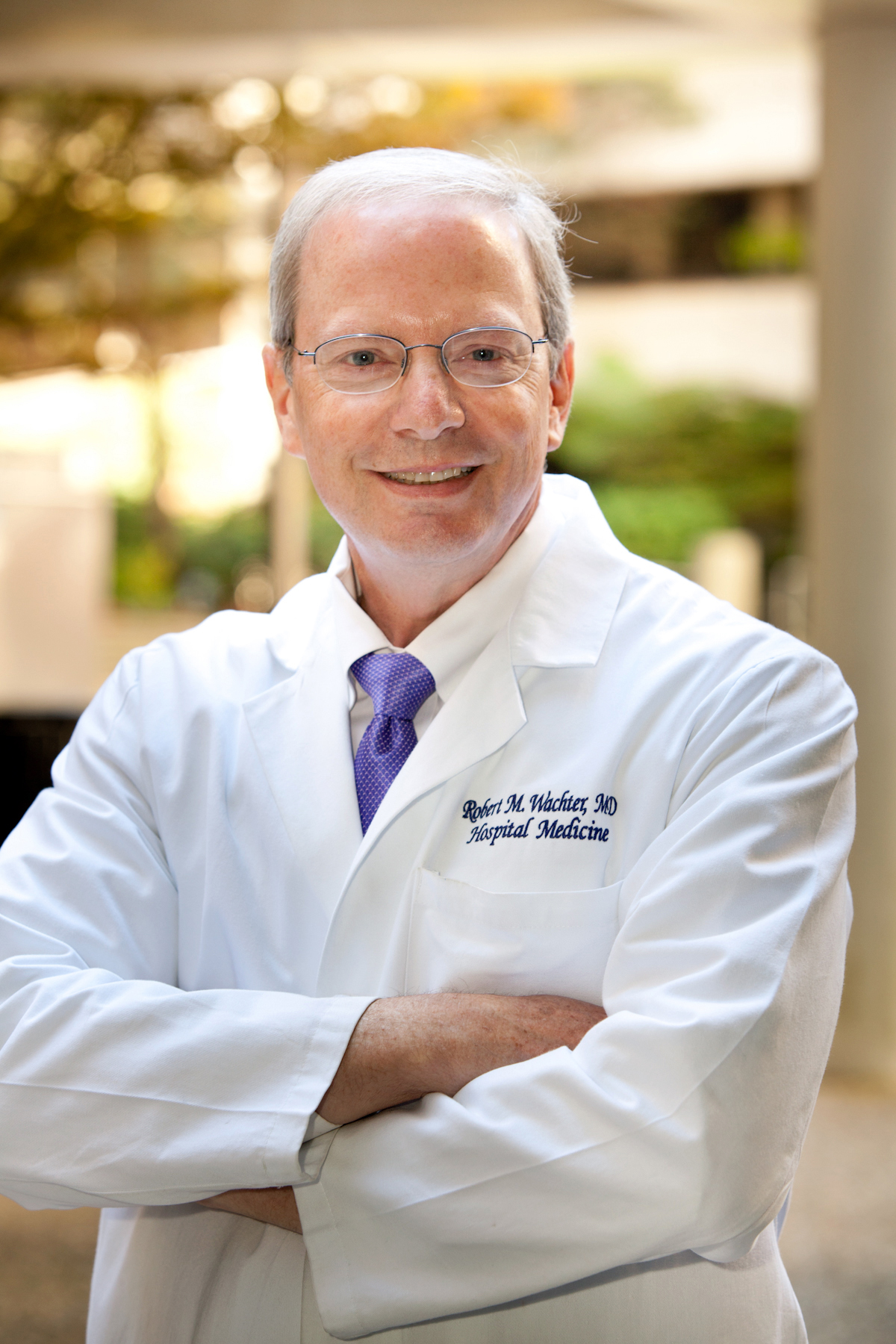
Dr. Wachter
Practitioners of this new specialty were dubbed hospitalists in the 1996 article by Robert Wachter, MD, MHM, an internal medicine doctor at the University of California San Francisco, and colleague Lee Goldman, MD.1 They brought widespread attention to this new style of medical practice that was already emerging in hospitals around the country where primary care physicians were leaving the hospital, no longer willing or able to manage the care their patients needed while hospitalized.
Two other pioneers in this new type of medicine, John Nelson, MD, MHM, then practicing in Gainesville, Fla., and Winthrop P. Whitcomb, MD, MHM, in Springfield, Mass., had independently answered the call to start managing hospitalized patients in their own facilities—but without knowing if they were alone in doing so.
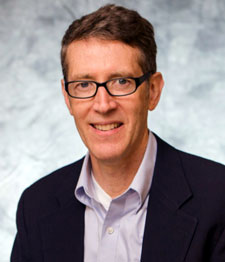
Dr. Nelson
“Man, did I ever want to talk to other people who were doing this,” Dr. Nelson said. “I took it upon myself to find these people by attending meetings of organizations like the American College of Physicians and making cold calls to hospitals.” An article describing Dr. Nelson as “an internist without an office” led Dr. Whitcomb to call him.
When Dr. Wachter’s article came out, Drs. Nelson and Whitcomb contacted him to discuss their mutual interest in coming together face to face and forming a medical society that could help guide, support, and define this new specialty. At the first educational conference dedicated to hospital medicine, convened by Dr. Wachter in San Francisco in April of 1997, Drs. Nelson and Whitcomb asked for some time at the end of a long day of medical information exchange to raise the possibility of forming a society to represent the nascent specialty. The response was overwhelming.
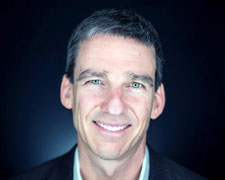
Dr. Whitcomb
How a society emerged
Nobody left the room, Dr. Nelson said. “Everybody wanted to talk about a society. One guy even opened his wallet and handed us some money for his dues.” The society that emerged is also celebrating its 25th anniversary, alongside the field to which it’s intimately connected. Originally incorporated in 1997 as the National Association of Inpatient Physicians, it changed its name to the Society of Hospital Medicine in 2003. Soon there was a mailing list and a newsletter, with the first national meeting held in conjunction with the American College of Physicians conference in 1998.
The new board met with a strategic planning consultant, Laurence D. Wellikson, MD, MHM, a physician engaged in building managed-care entities in California. “I told them health care is going to change. I said hospitalists could be like pathologists—just ordered when needed. But I had a bigger vision of what they should be,” Dr. Wellikson said.
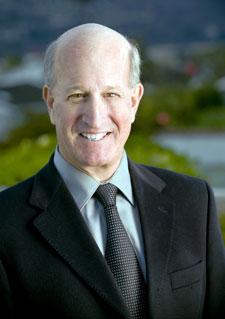
Dr. Wellikson
“I said in order to get there, you have to form an identity. What is a hospitalist? What is the Society of Hospital Medicine? You need to hire staff and get your act together. They called me back the next year to do another strategic plan.” Then they offered Dr. Wellikson the job of SHM Chief Executive Officer, starting in January 2000.
And while the society was having these discussions, Dr. Whitcomb said, the field was exploding. “It was like somebody flipped a switch. We weren’t waiting for everybody to catch up. We just did it.”
Erecting a big tent
SHM has fostered the growth of hospital medicine with education, advocacy, and a professional home for the doctors who wanted to practice hospital medicine. It’s helped define the field and scope of practice for a professional community that’s been described as the fastest-growing medical specialty in history.
One of the reasons for SHM’s success, said its founders, is a strategic decision to build a big tent that welcomed multiple stakeholders with a shared interest in acute-care medicine. Early on it was important to have academicians in major medical centers and hospitalists practicing in community hospitals feel equally at home, because they both had something important to contribute to the mission.
“With a lot of quality and safety issues emerging, we made the strategic decision to build the big tent for a specialty whose agenda is not only the individual patient but also the health care system where the hospitalist works and how to make the system work better,” said Dr. Wachter, who now chairs the 900-member department of medicine at the University of California, San Francisco. There was a need to organize practice and payment models, learn how to demonstrate hospital medicine’s value, and simultaneously, pay attention to system issues, quality, and patient safety.
Other hospital medicine clinicians, including nurse practitioners, physician assistants, pharmacists, and other members of the team, also were welcomed into SHM and supported with specialized resources. Hospitalists trained in family medicine, although less common than internists, have their own special interest group (SIG) at SHM, one of many. Pediatric hospitalists, practicing a similar model but with different clinical concerns, have played important leadership roles throughout the Society’s history, including the development of quality initiatives such as a set of core competencies in pediatric hospital medicine, completed in 2010 and revised in 2020.
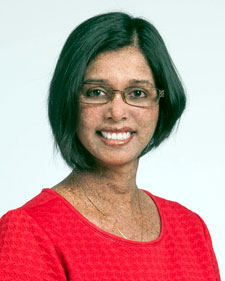
Dr. Kumar
“I’m a pediatric hospitalist and I believe SHM has a very important role in connecting physicians from different disciplines,” said Anika Kumar, MD, who practices at the Cleveland Clinic in Ohio. “I learn every day from colleagues about changes in inpatient safety and quality metrics and billing. It’s important in this day and age for people to feel included and that they have a home. SHM also does a lot to advocate for us. SHM may have been founded by internists, but it was also a home for those of us in pediatrics, med/peds, and family medicine.”
SHM has been recognized for its leadership in quality initiatives such as BOOST—Better Outcomes for Older Adults through Safe Transitions—the first of several comprehensive, evidence-based, mentored implementation programs offered to its members through its Center for Quality Improvement. BOOST helped cement SHM’s reputation as a quality-oriented organization. The Society was recognized with the Joint Commission’s 2011 John M. Eisenberg Award for Innovation in Patient Safety and Quality.
SHM’s Center for Quality Improvement continues to support HM clinicians with personalized approaches to quality and safety on topics ranging from care transitions and a variety of disease-specific areas to palliative care. A second Eisenberg Award was bestowed in 2016 for SHM’s I-PASS Study Group—Illness severity, Patient summary, Action list, Situational Awareness, Synthesis by research—which works to improve patient safety by standardizing practitioner communication in transitions of care.
A mission-driven organization
Dr. Wellikson’s leadership lasted until his retirement in July 2020, when he passed the baton to Eric E. Howell, MD, MHM, a hospitalist pioneer at Johns Hopkins Bayview Medical Center in Baltimore, Md., and one-time president of SHM.
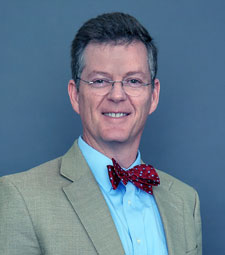
Dr. Howell
Dr. Howell was fresh from the experience of opening a field hospital for COVID-19 patients in Baltimore and said he chose to come to SHM because he considered it a mission-driven organization, putting the needs of patients and its members over the needs of the organization. “SHM truly is a big tent, full of people from different backgrounds sharing the same vision,” he said.
But in an uncertain world, what’s next for SHM? “We’re starting to get a better picture of that,” Dr. Howell said. As the field has grown in size and importance, some of its traditional boundaries in the acute-care hospital—originally defined as the setting for hospital medicine—have been stretched as hospitalists answered the call to provide a similar kind of acute medicine in post-acute settings like skilled nursing facilities, rehabilitation hospitals, and more recently the hospital-at-home model.
“Hospitalists are taking care of acutely ill patients regardless of setting. I did that when I opened the COVID-19 field hospital at the Baltimore Convention Center,” Dr. Howell said. “More and more, acute care is occurring outside of the hospital setting. It may still be called hospital medicine, although we have changed our name before. But I think the pivot will be out of the hospital to wherever acute care is provided, regardless of setting. And I think SHM will be involved in that.”
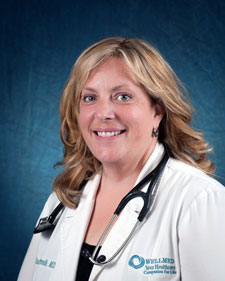
Dr. Chmelik
Elizabeth Chmelik, MD, FAAFP, SFHM, joined the National Association of Inpatient Physicians (NAIP) back in 2001 as a family medicine resident who loved the inpatient rotation. “Joining the association was about looking for who is going to guide us. It was a lifeline.” More recently, Dr. Chmelik went to work for WellMed Medical Management, a company that promotes value-based health care, and she’s starting an SHM SIG for this topic of growing importance.
Challenges never envisioned
Today, SHM has approximately 15,000 members, of whom 83 to 85% are physicians, and most of the rest are hospital medicine nurse practitioners and physician assistants, or residents and medical students. Estimates suggest that 50,000 to 60,000 hospitalists currently practice in the United States.
But the field is now confronted by challenges never envisioned at the time of its founding, including high rates of job stress and burnout by hospitalists—along with all other medical specialties—and the impact of the COVID-19 pandemic on hospital care. In hospitals across the country, it was hospitalists who responded first to COVID-19, often providing the lion’s share of medical care for seriously ill COVID-19 patients, said Flora Kisuule, MD, director of hospital medicine at Johns Hopkins Bayview Medical Center.
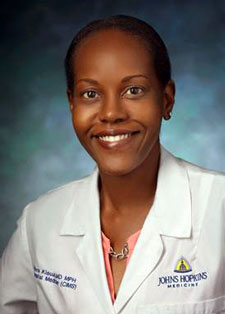
Dr. Kisuule
More recently, attention has grown for the pressing issues of diversity, equity, and inclusion, particularly in the wake of the reckoning for America sparked by the tragic death of George Floyd in police custody in Minneapolis, Minn., on May 25, 2020. “Right before I came on board, everything pivoted around George Floyd,” Dr. Howell said.
“SHM had made a deliberate choice to be more diverse, with a Diversity, Equity, and Inclusion (DEI) task force, and changed how our annual meeting was developed and its speakers recruited. Our board was also becoming more diverse.” But when George Floyd died, that pushed the organization to be even more deliberate. “We realized that the diversity journey is a journey,” Dr. Howell said. That included looking more closely at the organization’s staff and seeking opportunities to partner with historically black colleges and medical schools to identify future hospitalists.
In 2020, SHM’s Board of Directors empaneled its second Diversity, Equity, and Inclusion task force, charged with making recommendations for how SHM can continue to create a respectful environment for all. This task force recommended supporting the enhanced engagement of underrepresented minorities in medicine and empaneling a permanent Diversity, Equity, and Inclusion committee of the Board of Directors. SHM also just hired its first diversity officer.
The committee, which met for the first time in November, “… will be doing the work of the Board—helping us to be better with the diversity of our membership—which starts with knowing how diverse they are,” Dr. Howell said. The organization is also addressing other forms of equity, including gender. “But we want to make sure we don’t dilute the message of investing in people of color,” Dr. Howell said.
Dr. Kisuule said she believes SHM is doing what it needs to be doing to address diversity issues. She helped lead the society’s initial DEI task force, starting in 2018.
Legacy of hospital medicine
Jerome O. Siy, MD, CHIE, SFHM head of the department of hospital medicine at HealthPartners in St. Paul, Minn., and SHM’s current president, said the last couple of years of the COVID-19 pandemic and a broader geopolitical divide in this country have profoundly affected health care and hospitalists. “Since SHM’s 20th anniversary, all of health care has experienced much more stress. What does that mean for us as a society? SHM has faced these issues head-on, which is a strong testament to what we have accomplished, but how do we move forward?”
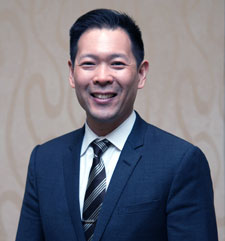
Dr. Siy
There’s always a need for more education and more research to figure out how to support the field and address its members’ needs, Dr. Siy said. “With the pandemic, we were tested, 34and we did a good job. But it reminds us that we have to be ever-ready for the next big crisis.” Other looming challenges include getting a handle on emerging information technologies, addressing health care regulation and payment models, and looking at how the work of hospital medicine can be sustainable for the arc of a career.
“When I first started working there, I wasn’t sure the specialty would achieve the dynamism and impact that I felt was possible,” Dr. Wellikson said. “It far exceeded my vision. We are in the middle of everything that’s happening in health care—as important as any medical specialty. I think the secret sauce of SHM was the incredibly bright people who were attracted to hospital medicine and SHM, and who gave so much.”
Dr. Whitcomb said he is both proud and grateful for being involved in the field’s founding. “We saw a need, and we were lucky to be the ones who addressed it. But I think the biggest legacy is for all the patients who benefitted from having a doctor present in the hospital at their time of need to have a skilled clinician who would show up for them in real-time.”
Reference
- Wachter RM, Goldman L. The emerging role of “hospitalists” in the American health care system. N Engl J Med. 1996;335:514-517.
Larry Beresford is an Oakland, Calif.-based freelance medical journalist, a specialist in hospice and palliative care, and a long-time contributor to The Hospitalist.